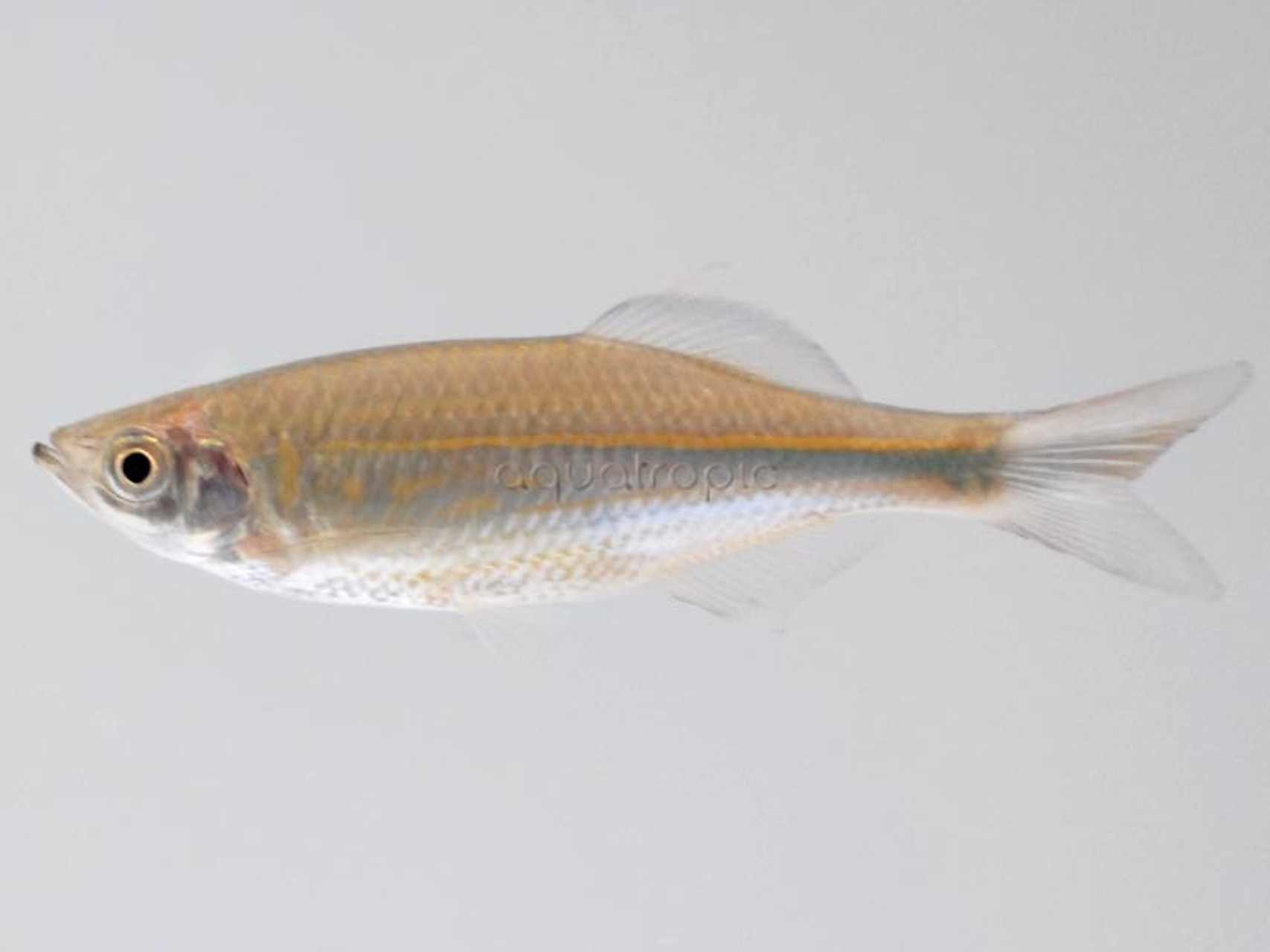Giant Danio (Devario malabaricus)

There are few fishes quite as energetic as the Giant Danio, a species that seems to be in perpetual motion. Originating from the swift-flowing rivers of India, these powerful swimmers are perfectly adapted for heavy water currents, but they are also just as at home in the calm waters of a home aquarium. At feeding time, this fish turns into a veritable piscine bullet, darting at breakneck speed towards any edible morsels in front of it. Though, without a tight-fitting lid, this can oftentimes lead to an untimely demise, as it’s not uncommon for them to leap clear of the water and wind up on the floor as fish jerky.
Reaching a maximum size of around three inches, this small fish requires relatively modest accommodations. An ideal aquarium is something measuring at least four feet in length, allowing this fish to flex its swimming muscles to their fullest. Specimens kept in smaller tanks often run headfirst into the sides of the tank and can easily stress out other tank mates with their boisterous manners. Like most cyprinids, the Giant Danio is a schooling fish that should always be kept in as large of a group as possible, ideally over a half-dozen individuals.
The sexes are mostly alike, with females developing a more rotund belly when fully mature. They regularly spawn in many aquariums, scattering their small eggs about at random, but the young will rarely survive without direct intervention.
Nearly any food offered will be eaten with gusto, including flakes, pellets and frozen options. The natural diet is likely to be heavily comprised of insect larvae and crustaceans. Possible tank mates include cichlids, rainbowfishes, other active barbs and tetras, loaches and catfishes. This species can make for an especially worthwhile addition to a tank boasting larger species, as they are fast enough to avoid many aggressive species and will snatch up all the smaller bits of food missed by bigger tank mates. Species to avoid are overly peaceful and lethargic fishes (e.g. Neon Tetra, Galaxy Rasbora, etc) that will be outcompeted for food and stressed by the active swimming of the Giant Danio.
Lastly, you’ll often see this fish traded under a different name: Danio aequipinnatus. This seems to be based on a misidentification, as that fish apparently lacks markings and occurs in a different part of India. The correct name for the species common to the aquarium trade is now thought to be Devario malabaricus. But, whatever you want to call it, this is a gorgeous fish that will liven up any tank.